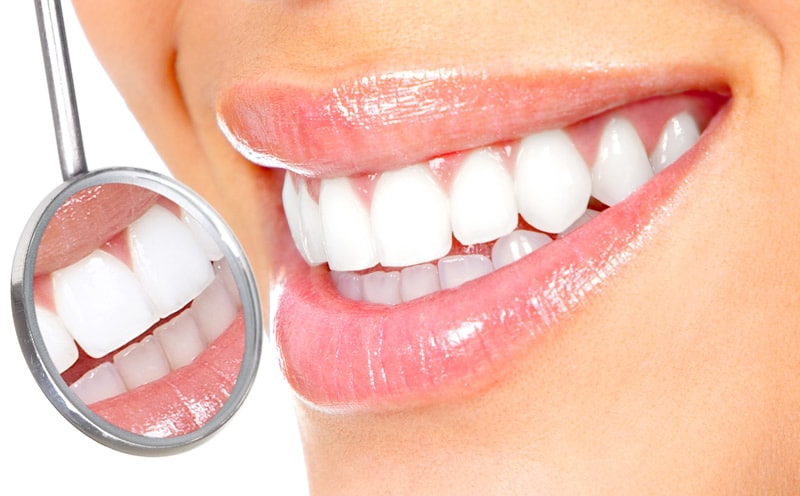State of the art technology at Gelencsér Dental Clinic
Dental HightechLast update: 12. July 2011
|
Intraoral camera
… a video tour of your mouth so you can better understand your dental requirements and make informed decisions about your treatment…
Our small, sterile intraoral camera projects digital images of your oral cavity onto a computer screen. This way we can easily identify problem areas and provide advice on a suitable dental hygiene routine.
Digital X-ray in dental practices
.. we keep our patients’ radiation exposure levels to a minimum.
Digital X-ray is the safest and most effective form of X-ray imaging used in dentistry.
It uses digital X-ray sensors, which are extremely sensitive to X-rays, instead of traditional photographic film.
This way, we are able to reduce radiation exposure levels by over 50% and avoid repeat X-rays due to faulty images. The high resolution digital images are available to view in a matter of seconds. They can be resized if necessary, so we can provide a clear and quick diagnosis to our patients.
CAD / CAM technology
… the latest technology for top quality dental restorations…
CAD / CAM is a highly precise technology for the design and construction of high quality tooth restorations.
An impression of the tooth is taken using a laser scanner and all details are transferred to a computer. A special device controlled by the computer then creates a visually aesthetic, safe and secure tooth restoration, made of top quality ceramics. The restoration is hand finished at our lab to match your individual colour requirements.
Dental Laser
.. dental laser is primarily used for root canal and periodontal treatments.
What is dental laser?
Laser is a device that produces an intense beam of light. There are various types of laser, each using different wavelengths optimised for different performance goals. Dental laser is a type of laser designed specifically for use in dentistry. Whilst its use for some routine treatments remains limited, in many cases dental laser presents real advantages over traditional techniques.
When is dental laser used?
Dental laser was originally applied during root canal and gum disease treatments. It is now increasingly used in other areas as well, for example for the treatment of tooth decay.
Is it possible to use dental laser for root canal treatments?
Dental laser is a popular and highly effective tool for root canal procedures – the treatment for infection of the pulp in the centre of the tooth. Laser beams are directed to the root canal via long and extremely fine instruments. This allows the laser to reach areas that conventional tools cannot get to. During treatment the laser kills bacteria and stops infection. Once it is cleaned and disinfected, the root canal is then filled and sealed to prevent any further infection.
Is dental laser suitable for periodontal treatments?
Dental laser is suitable for the treatment of periodontal disease, also known as gum disease. Gum disease is a bacterial infection that affects the gum and the bone that supports the teeth. The collection of bacteria causes the gum to become swollen and create a ‘pocket’ beneath the tooth. With laser gum treatment, bad bacteria can be killed and the infection eliminated. During treatment it may be necessary to open or isolate the gum, which dental laser is also suitable for.
How can dental laser be used for the treatment of tooth decay?
When treating tooth decay, similarly to the traditional drilling method, dental laser is used to remove the damaged hard tooth structure. The laser can be precisely directed at the damaged area to detach and remove the decay. Applying laser as opposed to drilling is less noisy, less painful and less destructive to surrounding structures. Whilst most tooth decay can be treated with dental laser, in some instances it is preferred to use more conventional techniques, for example if optimal precision cannot be achieved or if the affected area is not suitable for laser treatment.
Can dental laser treat sensitive teeth?
Sensitive teeth are caused by small channels called dentinal tubules in the neck of the tooth. Sensitivity may be increased if these tubules become exposed to certain elements, for example extreme temperatures. After a short treatment with dental laser, the tubules can be closed to reduce tooth sensitivity.
What other dental treatments is dental laser used for?
Dental laser is also used for the application of fissure sealants. Fissure sealant is a protective, tooth coloured, hard resin coating that is bonded in the grooves of teeth to prevent decay.
In addition, dental laser is extensively utilised in various types of oral surgery.
How to use dental laser safely?
During laser treatment precaution must be taken to protect the eyesight of patients and staff. We provide protective eyewear to all our patients and staff.
Summary
Dental laser is highly effective, extremely versatile and, in many cases, it presents significant advantages over traditional dental treatments.
Functional diagnostics in dentistry
.. in-depth analysis of your oral structure
With the help of functional diagnostics, your oral structure can be thoroughly analysed to ensure that the treatment you receive is optimal and fully customised to your exact requirements.
We take special care in designing and constructing long lasting dental restorations such as crowns, bridges, prosthetics and bite raising appliances.
We examine the position of the jaws, placing great emphasis on the interaction between the upper and lower jaws and the alignment of teeth. This information helps us deliver the best possible treatment and allows you to reduce the risk of developing future problems with your jaw joints.
How can important dental dimensions be determined using functional diagnostics?
Exact measurements are taken in a relaxing environment, completely pain free. We conduct a facial evaluation and make an impression of the patient’s upper and lower jaws and teeth.
The facial evaluation determines the position of the patient’s upper jaw in relation to the skull and joints. Based on these dimensions together with the impression of the teeth, a model of the patient’s oral structure is mounted, using dental stone.
The patient’s measurements are then entered onto an articulator, to which the model of the oral structure is fixed, to reproduce movements of the jaw joints.
This simulation enables our dentists and dental technicians to design and construct bespoke dental restorations that fit perfectly within existing structures.
Dental loupes and dental microscopes
.. visual perception in a new dimension
Good eyesight is extremely important in recognising tooth decay, providing the appropriate treatment and using tools and equipment accurately.
We can achieve the highest level of precision and safety by enhancing our eyesight with state-of-the-art technologies when diagnosing and treating our patients.
Dental loupes improve the precision and safety of our work
Dental loupes are binocular and take on the form of a pair of glasses. We use this magnification device to test the efficiency of our work on the laboratory models and to maintain the highest degree of precision at all times.
Dental microscopes allow dentists to observe structures not easily visible to the naked eye
Dental microscopes can provide staggering levels of magnification. It serves a primary role in our dental laboratory where we can view live images of the microscope, on screen. This provides valuable insight to our team of dental technicians and ensures the best treatment outcome.
Dental decay detector for accurate diagnosis
The dental decay detector is an innovative device used for the effective detection of dental decay. We are able to detect and treat decay early and without unnecessary exposure to X-ray.
Accurate diagnosis helps prevention, as do the following activities:
- Regular, professional cleaning of the teeth
- Check-up appointments.
Digital photo documentation at our dental practice
.. increased visibility and effective communication
We document the patient’s entire course of treatment – before, during and after treatment – using digital photographs.
This provides effective communication between the dentist and the dental technician whilst offering increased visibility to the patient.
With the help of before and after treatment snapshots, we are able to show patients visual images of the outcome and the effectiveness of treatments. Most patients feel motivated because of positive results and, with our help, maintain long-term oral health. Our dental practice has a robust IT network that allows the technician team to access stored digital images when needed. Using additional electronic tools, such as electronic patient records and the results of functional diagnostics, our dental technicians are able to create bespoke dental restorations.
ÚJ szótár elem: itemprop_provider


8380
75 Vörösmarty
Heviz
Balaton
Hungary
+3683340183
€€
ÚJ szótárelem: itemprop_areaserved
Last update: 12. July 2011


